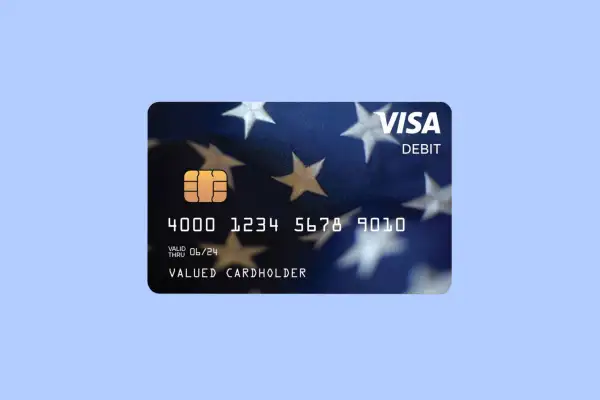What Is Metabank, and Why Is It in Charge of Stimulus Check Debit Cards?

UPDATE: This story was originally published in February 2021. Since then, the United States government has approved and begun distributing a third round of stimulus checks in the amount of $1,400 per person.
Most Americans will receive their third payment via direct deposit, but the IRS is also sending paper checks and prepaid debit cards in the mail. The debit cards, formally called EIP Cards, will arrive in white envelopes emblazoned with the Department of the Treasury seal. The cards themselves will have mentions of Visa, Money Network and MetaBank, N.A. on them.
Read below to learn more about the stimulus check debit cards and how to use them.
Don't throw away that strange letter from Nebraska you just got in the mail. Even though it might seem sketchy, it's not junk mail — it's your second stimulus check.
The IRS and Treasury Department are in the middle of distributing a round of $600 relief payments to pandemic-stricken Americans. While most went out via direct deposit and many have already appeared in people's bank accounts, some stimulus payments were relegated to snail mail. In addition to paper checks, about 8 million debit cards are now being sent out.
But they don't look quite as official as you may expect.
Formally called Economic Impact Payment Cards, or EIP Cards, the payments are being mailed in plain white envelopes. A small Department of the Treasury seal appears in the corner, but the return address is a P.O. box in Nebraska. There's red writing that declares it's "not a bill or an advertisement," which, if you've ever gotten junk mail before, is normally a sure-fire way to know something's definitely a bill or advertisement. And perhaps most confusingly, the card inside is issued by a company called MetaBank, N.A.
This might pose a problem given how many people accidentally trashed their stimulus checks last time. Here's what you need to know about the debit cards, MetaBank and more.
Why are some stimulus checks being sent as debit cards?
The simple answer is because it's fast. The IRS says it's sending out prepaid debit cards "to speed delivery of the payments to reach as many people as soon as possible." These cards are sponsored by the Bureau of the Fiscal Service.
People in all 50 states as well as Washington, D.C., are getting EIP Cards, especially those who live in the western U.S. The IRS says it doesn't determine who gets a debit card and who gets a check, and there's no guarantee as to which you receive — even if the first stimulus from last year came as a paper check.
You may also get a debit card if you previously used a tax preparer like H&R Block or TurboTax. The IRS may have tried to send your stimulus payment via direct deposit to a temporary bank account used for your tax refund transfer, gotten rejected, and defaulted to sending you a check or card.
So if you haven't gotten your second stimulus check through direct deposit yet, keep an eye on the mailbox.
What the stimulus check debit card looks like
The IRS shared an example EIP Card here. It's a Visa with a blue background and white stars.
It'll likely come in an envelope with a seal and return address that says "Economic Impact Payment Card, PO Box 27022, Omaha, NE 68124-7022." Instructions on how to activate it will be included.
What is MetaBank, N.A.? What about Money Network Financial?
The names on the back of the EIP Card may be unfamiliar, but they are real. The IRS says MetaBank, N.A. is the "Treasury’s financial agent." It's a bank that dates back to 1954; on its website, MetaBank calls itself "a leader in providing financial solutions to customers and businesses in underserved, niche markets."
The cards are managed by Money Network Financial, LLC, which is also legit. Money Network hosts the site eipcard.com.
What you can do with an EIP Card
They function like any other prepaid debit card. So as long as the retailer accepts Visa, you can spend your EIP Card there. Recipients can also use their EIP Card to get cash by using an ATM or put the funds into a bank account for free. The money does not expire.
In order to activate your stimulus check debit card, you'll need to sign off on the cardholder agreement and fee schedule, set up a four-digit PIN, and sign the back.
Does it cost money to use an EIP Card?
You can see a long, detailed list of EIP Card fees here, but the general summary is that it should cost $0 to withdraw funds from an in-network ATM in the U.S. It's $2 to withdraw funds from an out-of-network ATM, though this fee is waived the first time you do it. It costs 25 cents to check your balance on an ATM (but it's free online, on the phone or in an app).
It's normally $5 to withdraw from your EIP Card using a bank teller over the counter, though this is also waived for your first time. If you have questions, you can call 1-800-240-8100 or see an FAQ here.
More from Money:
Here's When You'll Get Your Second Stimulus Check
